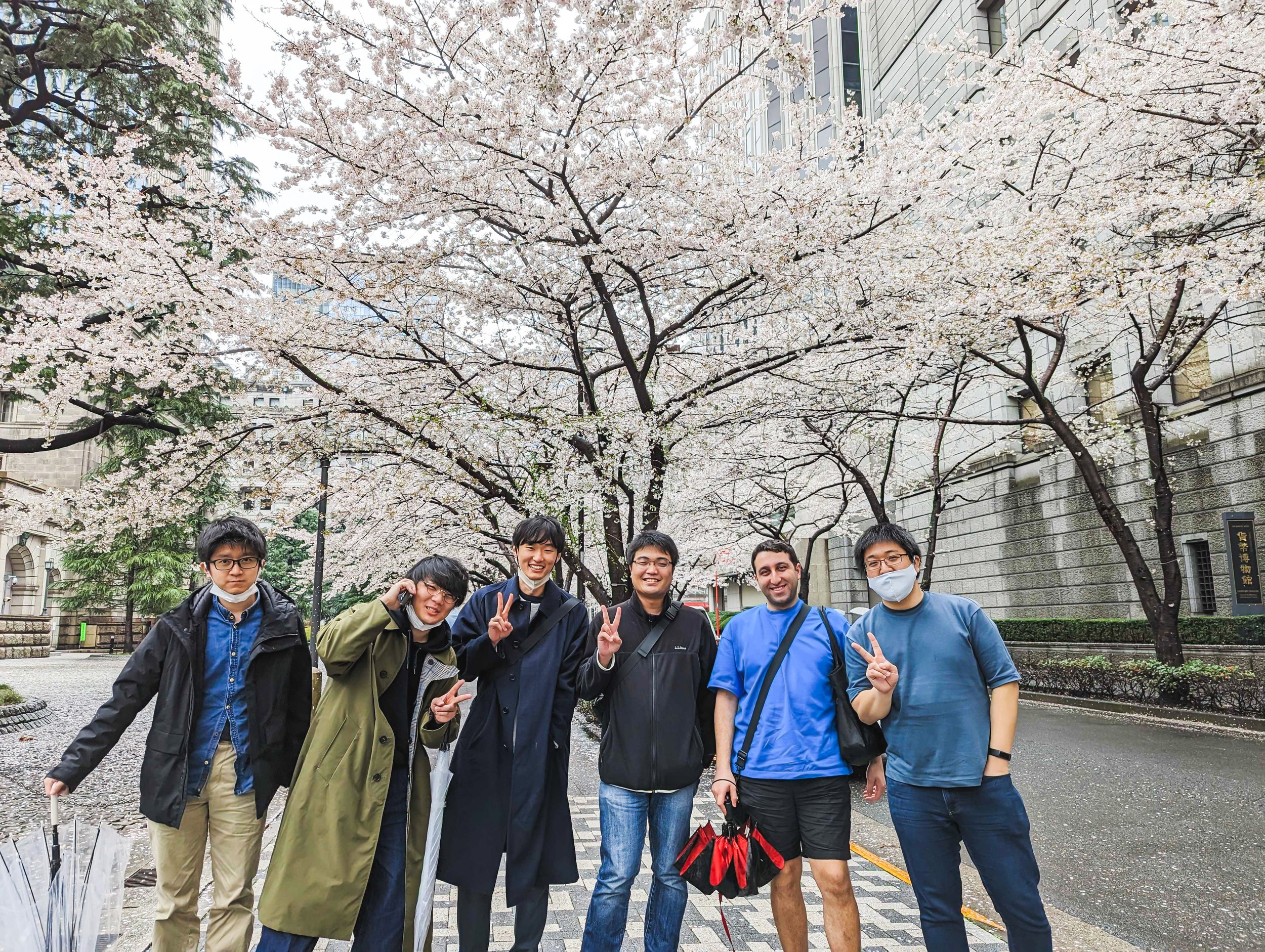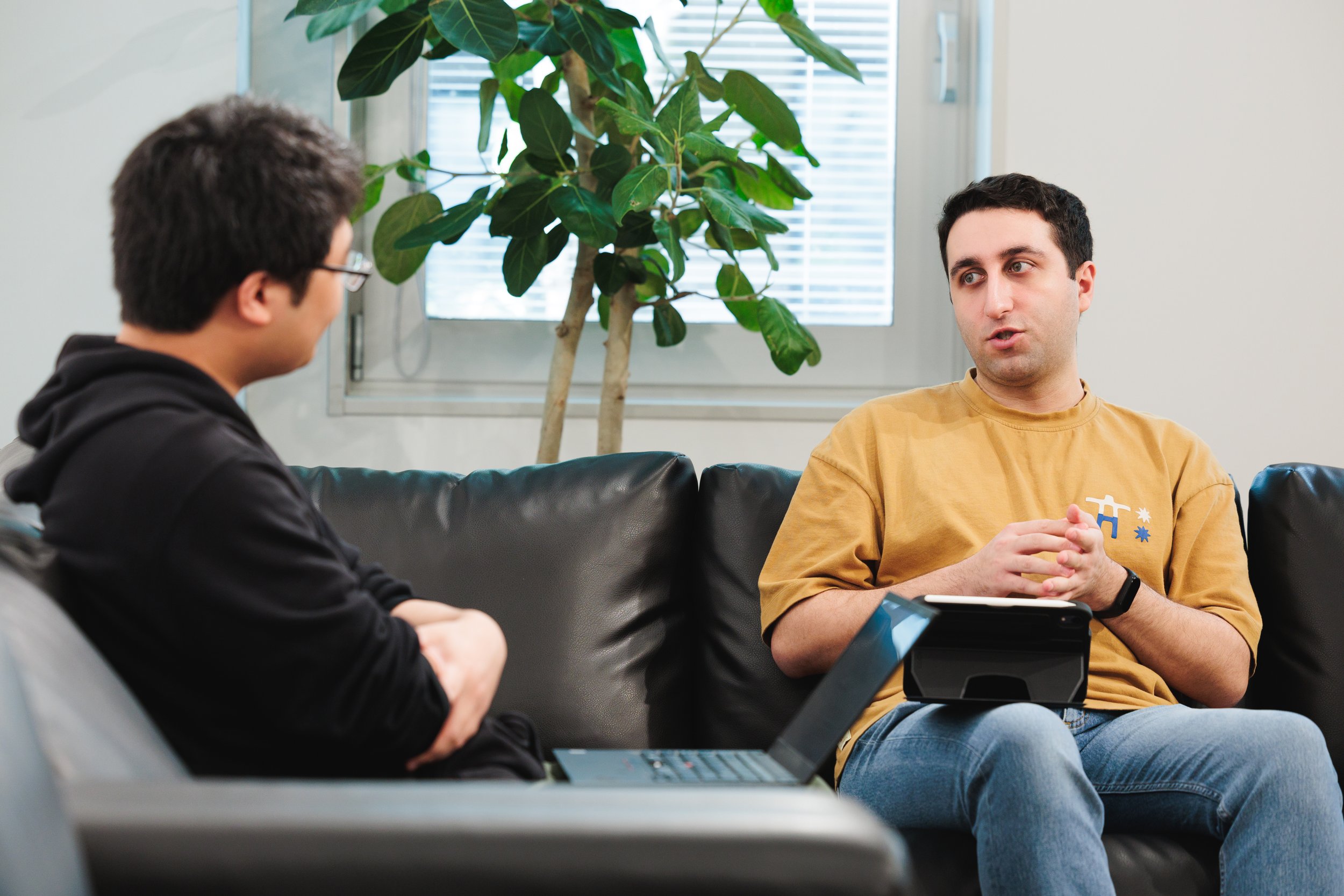A deep dive into communication and collaboration within the Autoware community
TIER IV People shines a light on the individuals and teams whose unique experiences, backgrounds, and stories bring our mission to life.
Ryohsuke Mitsudome, left, and Mete Fatih Cırıt
TIER IV pioneers the development of Autoware, the world’s leading open-source software for autonomous driving, working closely with the Autoware Foundation to foster collaboration within the OSS community. In this edition of TIER IV People, we hear from software architect Ryohsuke Mitsudome, who serves as chair of the AWF Technical Steering Committee, and Mete Fatih Cirit, a software architect at the AWF and Leo Drive.
Ryohsuke: As chair of the Technical Steering Committee, I oversee the technical aspects of the Autoware Foundation, collaborating closely with Fatih. Since you’re here at TIER IV, I’m keen to know about your experience in your engineering role both at Leo Drive and the Autoware Foundation. Before that, how has your experience been in Japan?
Fatih: I came to the TIER IV office not only to delve into the development process and office environment but also to immerse myself in Japanese culture.
Ryohsuke: Firstly, let’s discuss the TIER IV partnership with Leo Drive. While not the first to join the Autoware Foundation, Leo Drive has become a significant contributor. The company has evolved into a key member, actively participating and even leading various working groups. One notable achievement is the bus operational design domain (ODD).
Leo Drive, ITRI and Isuzu teamed up to integrate Autoware into a bus and a demo was held in February. From the acceleration, braking, even when the bus door was opening, to when it arrived at the bus stop, the performance was really smooth.
Fatih: Like many other software development projects, integrating the Autoware stack had challenges. But I believe we eventually overcame most of them. The CI/CD [continuous integration/continuous deployment] pipeline also raised a few issues.
Ryohsuke: Now that the bus ODD project is complete, it will be included in the first release of Autoware, making integration smoother for others. About CI/CD, we definitely need improvement. There was a lot of development for our first CI/CD pipeline and we keep saying that we should have more engineers to work on it and improve it. During my visit to Leo Drive, you also mentioned difficulties with debugging and monitoring the nodes. Could you expand on those difficulties?
Fatih: When a node crashes in Autoware, it's hard to figure out the exact cause of the failure. It's also hard to find out which actual node crashed at the time. We need better health monitoring systems to make sure that when something crashes, we know exactly the source of the failure and the reason for the crash.
Ryohsuke: Agreed, improved diagnostic tools are essential. Leo Drive’s engineers display a deep understanding of Autoware. Not only about ROS but Autoware and how it works. Are there specific training programs at Leo Drive?
Fatih: Our approach involves following ROS 2 tutorials and the documentation, attending online courses, and peer training. This ensures that junior developers are mentored by senior developers to understand how the process works and how they can get more information about development in general.
Ryohsuke: What’s your overall view of TIER IV?
Fatih: TIER IV strongly emphasizes open-source development. The tools and the development efforts created by TIER IV are really useful to work with. The workspace – particularly the garage with autonomous vehicles, sensors, and computing equipment – is remarkable. There’s also external equipment monitoring the vehicle’s setup for remote testing. The way TIER IV develops autonomous vehicles is noteworthy. Separating core development from testing and integration allows for a smoother process.
Ryohsuke: Initially, TIER IV’s setup was similar to Leo Drive’s. Core developers managed both development and vehicle integration. Although TIER IV still follows this to understand the code’s impact or how to improve the algorithm, integration now has a dedicated team.
I’m curious to know what you think about the relationship between TIER IV and the Autoware Foundation. In my view, we could enhance engagement by encouraging more engineers to join Autoware Foundation working groups. Instead of relying solely on text-based GitHub discussions, live discussion could be more impactful. With the new working groups established, how do you foresee this evolving? As a Leo Drive and Autoware Foundation engineer, do you believe this will benefit the community?
Fatih: We’ve had software working groups and meetings consistently. Adding three more working groups in specific areas is beneficial. The software working group was too broad, limiting focused discussions due to its extensive scope. With the perceptional sensing, planning and control, and localization and mapping working groups now meeting bi-weekly, we expect increased participation.
Ryohsuke: The concept of sub-working groups for the software working groups, originally proposed by Leo Drive, was excellent. Specialized discussions within each working group are now possible. Our team lead for the planning working group intends to include more engineers. I believe enhanced communication among AWF members is vital for mutual growth.
We’ve focused on TIER IV and Leo Drive so far, but I’m interested in your thoughts on how we can change and enhance the Autoware community. Given our significant roles within the Autoware Foundation, we certainly have a vision for its future and roles in advancing autonomous driving technology. However, as a collaborator, what are your thoughts?
Fatih: Our broad vision for Autoware is to establish it as the standard open-source software for autonomous driving, accessible to anyone worldwide. I believe this aligns with the goals of other Autoware Foundation members. While we’re on the right path, more steps are needed to realize this goal.
Ryohsuke: I’d like to expand the Autoware committee further and seek direction from the board to make it more user-friendly. This way, we can attract more community members. However, I still see a gap between the number of Autoware users and contributors. While creating new issues and discussion topics is valuable, we need more contributors at the code level. How can we encourage users to contribute more actively?
Fatih: You’re right. The complexity of the Autoware project is a significant challenge. With around 250 packages and numerous nodes in runtime, it’s an intricate process for a vehicle to drive autonomously in multiple and varied scenarios. To address this, our initial step should be improving the documentation and creating comprehensive guidelines and tutorials for each package. Clear explanations, detailed diagrams, and simplified instructions would help lower the entry barrier for potential contributors.
Ryohsuke: Absolutely. While we have basic command-line tutorials for running Autoware, we lack comprehensive documentation explaining its inner workings, architecture, and node functionalities. It’s a bit of a chicken-and-egg problem – we need more engineers to create documentation, but without documentation, it’s challenging to onboard new contributors. We need to take the first step to break this cycle. Do you have any other ideas for specific improvements to the Autoware community?
Fatih: Debugging is quite challenging. To improve this, I’m developing a core version that will include an essential package called the Autoware Node. This will serve as the base for all other nodes to communicate with a central monitoring system, which we could call the control center. This system would greatly enhance transparency in debugging. Additionally, I plan to create templates for new nodes, simplifying package creation and verification.
Ryohsuke: So, it’s similar to the ROS create package command but modified for Autoware specifications. We might also need to integrate this with the base class for Autoware nodes to facilitate the development of new packages.
・・・
TIER IV is always on the lookout for passionate individuals to join our journey. If you share our vision of making autonomous driving accessible to all, get in touch.
Visit our careers page to view all job openings.
If you’re uncertain about which roles align best with your experience, or if the current job openings don’t quite match your preferences, register your interest here. We’ll get in touch if a role that matches your experience becomes available, and schedule an informal interview.
Media contact
pr@tier4.jp
Business inquiries
sales@tier4.jp
Social Media
X (Japan/Global) | LinkedIn | Facebook | Instagram | YouTube
More




